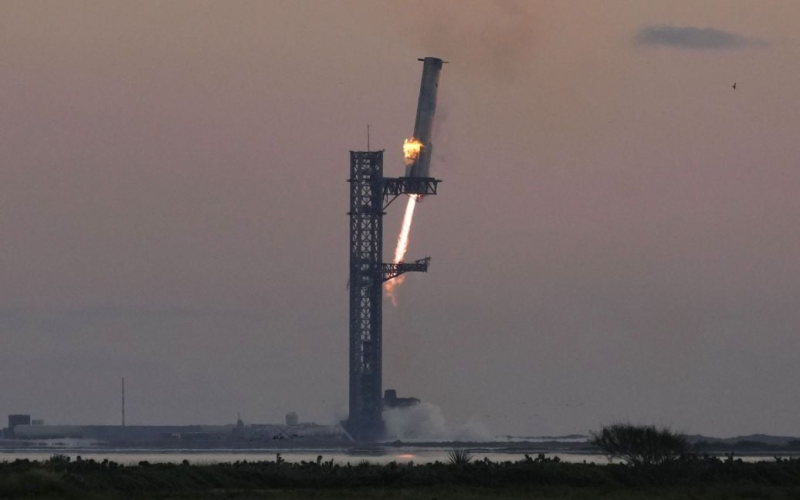
The successful return was an important step towards creating a fully reusable rocket that should reach Mars.
On Sunday, October 13, during the fifth test flight of the Starship spacecraft, Elon Musk's SpaceX company returned the Super Heavy first-stage rocket booster back to its launch pad for the first time in Texas.
Reuters reports this.
After sending the second stage of the Starship rocket into space, the booster separated at an altitude of about 70 km and began its return to Earth – the most daring part of the test flight.
The super heavy booster ignited three of its 33 Raptor engines to slow its rapid descent to the launch site as it aimed for the launch pad and tower from which it flew. The tower, taller than the Statue of Liberty, is equipped with two large metal sleeves at the top.
“The tower caught the rocket!” the space company's CEO Elon Musk wrote on the X network. SpaceX engineers watching the live broadcast burst into applause.
The successful return was a major step toward building a fully reusable rocket designed to launch more cargo into orbit, ferry humans to the moon, and ultimately reach Musk's final destination, Mars.
The Starship spacecraft, the rocket system's second stage, flew at more than 17,000 mph (27,000 km/h) at an altitude of 85 miles (143 km) in space and successfully completed the mission in the Indian Ocean after 90 minutes of flight, demonstrating a controlled landing.
Recall that in March 2024, Elon Musk's superrocket successfully took to the skies and entered orbit after two previous flights ended in explosions almost immediately after launch.
Related topics:
More news

